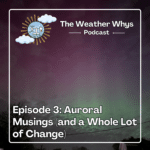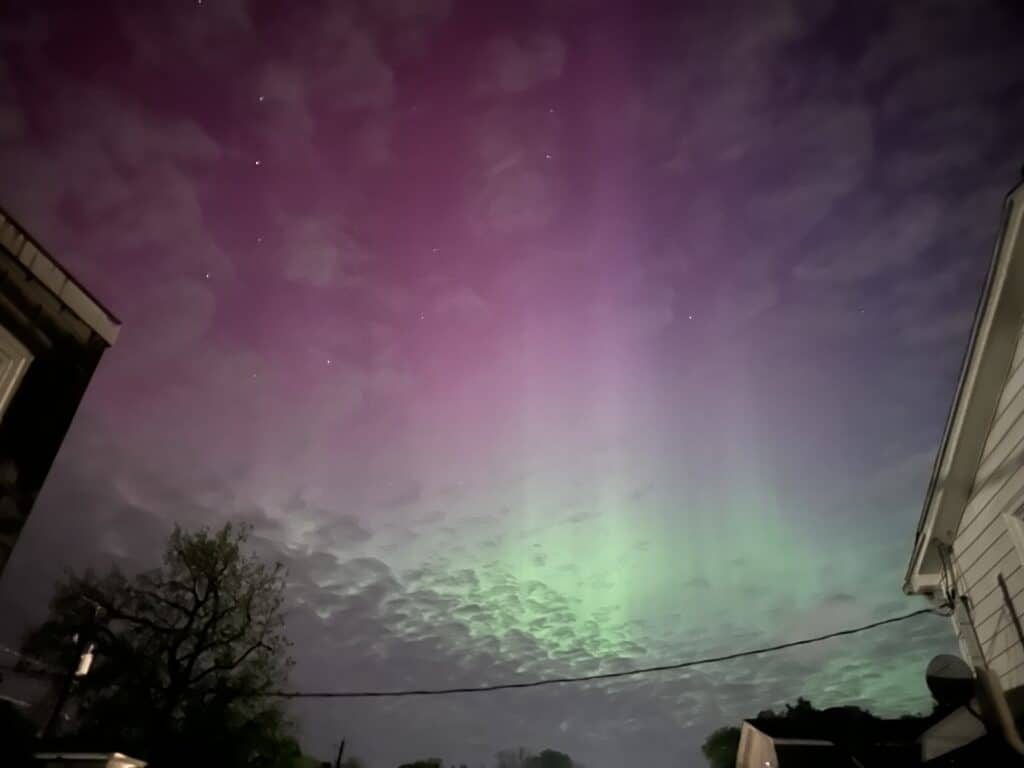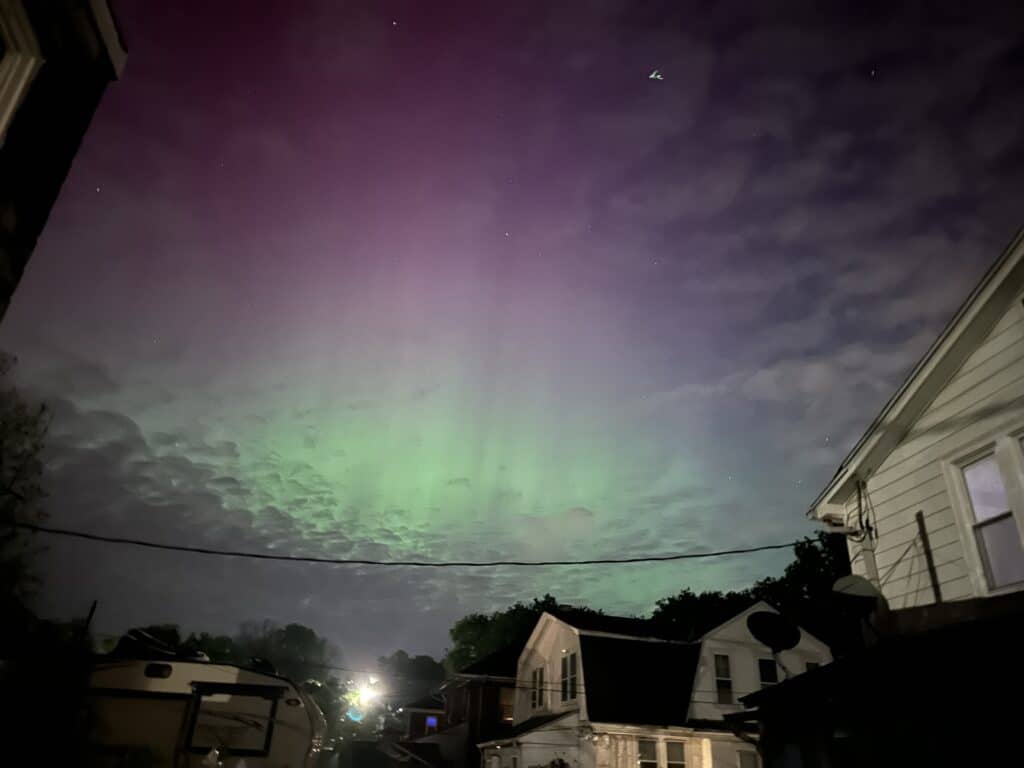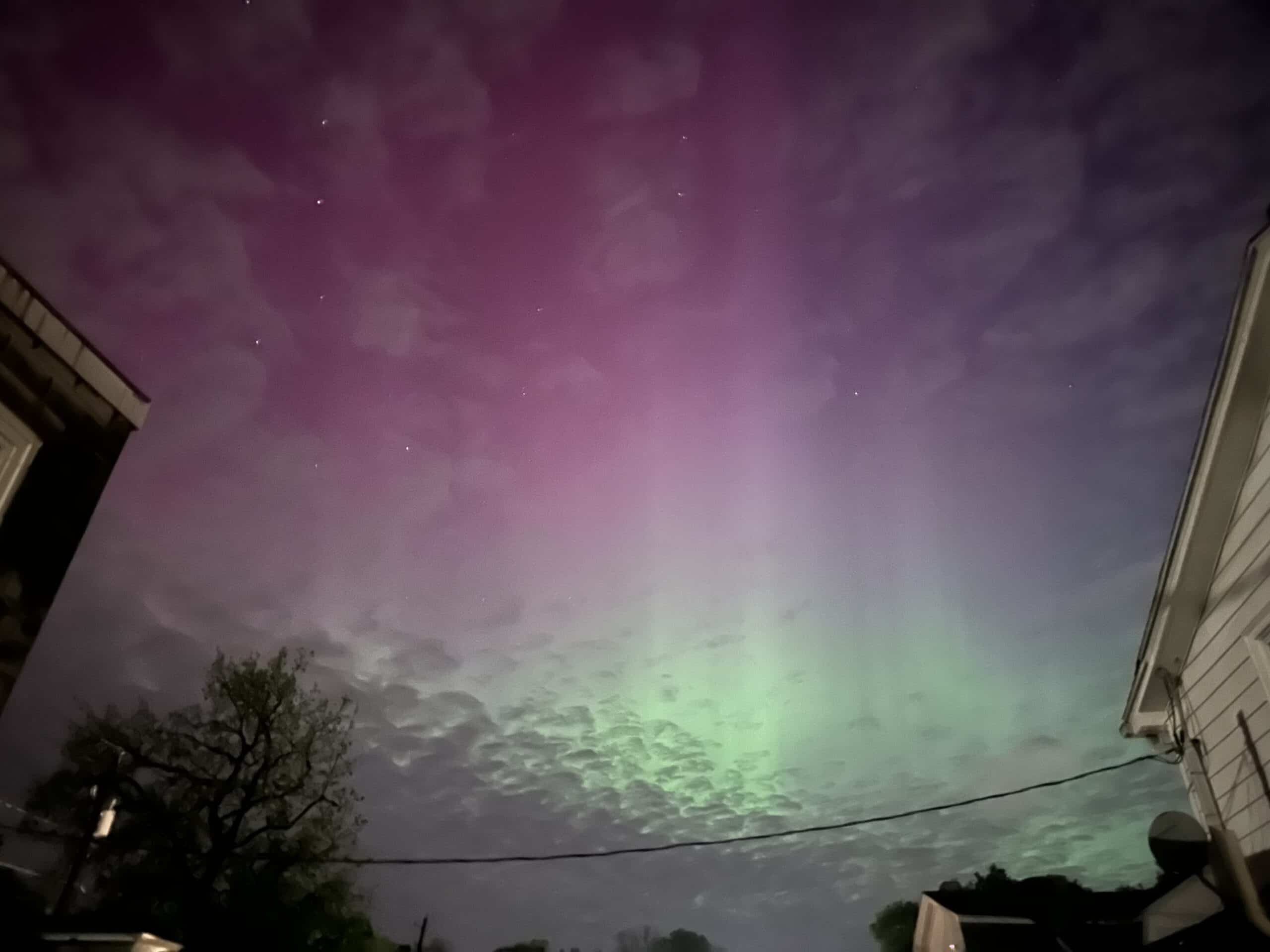
Well, you don’t always need a script to do a podcast as we’ve found out in this episode of the Weather Whys Podcast! Your host Ed Oswald shares a personal story about witnessing the Northern Lights after a series of powerful solar storms on May 11th. The storms caused the most stunning aurora display in 35 years, visible across the United States and beyond.
Ed also provides updates on the podcast’s hiatus, changes to their website, and plans for content, aiming to release new episodes every two weeks to a month.
Also, we keep giving the wrong email. It’s [email protected]! Sorry about that!
[00:00:15] And I’m like, I cannot believe, is that the aurora? Is that what I’m seeing?
[00:00:29] Hello and welcome to the Weather Whys podcast. It’s been a minute. I’m your host, Ed Oswald, and in this episode, we’ll start out with a personal story of sorts, But the main purpose of this episode is to give you an update on what’s been happening we’ve been absent for the past couple of weeks, months, actually. Unlike most episodes, this one is a little more unscripted than the others. So we’ll see how it goes. Hopefully I don’t veer too much off topic.
[00:00:55] So let’s get started.
[00:00:57] So we’ll start out with what’s perhaps the biggest weather story these past few weeks.
[00:01:02] And actually it’s not a weather story of anything here on planet earth, but rather in space. On May 11th, a series of solar storms hit Earth and it ended up causing the best Northern Lights show in 35 years, and it was visible by the naked eye almost anywhere in the United States, didn’t matter if you were in the northern part where you usually see them, I had friends in Mobile, Alabama who saw the Northern Lights, I saw pictures from Miami, even pictures from Cuba, Mexico, it was just crazy.
[00:01:33] It was widespread, visibility much more than usual. And of course Like I had expected, what would happen if something like this would ever occur, it was cloudy, and we had a persistent easterly flow across most of the Mid Atlantic, the Northeast. If you were anywhere in that area, you could not see anything for the entire show. Which is what I thought would happen, and the pictures were just so amazing, but I couldn’t see anything. So me and my mom even drove northward, hoping that maybe if we get far enough north and into the mountains, maybe we get above the stratus deck, that failed. We saw what we thought might’ve been lights, but it could just been the reflection of the city lights on the low clouds.
[00:02:17] We were just weren’t sure. And, so we just gave up, you know, Hey, that’s the way it happens. So around 2:30 in the morning of the, I believe it would’ve been the 12th then, I was walking to the convenience store and I figured, okay, we’re not gonna actually see anything here tonight. So on the way back I saw that the clouds were breaking and I figured, you know, this is probably the way it’s going to happen. And of course, it’s gonna happen just as the show’s over. So I turned the corner and in my back door, which would face North, and I see a faint green glow.
[00:02:49] And I’m like, I cannot believe, is that the aurora? Is that what I’m seeing? And sure enough, they tell you to take your smartphone camera, if you think you see it and point it, because the exposure time is longer than the human eye. So it picks it up. So once I did that, it showed so much more. There was pillars, the pillars that you see, which you can see in the pictures that I’ve attached to the show notes.
[00:03:14] They were bright green and pink. If you’d even see it moving, which they say that sometimes you’ll be able to watch the Northern Lights move if you watch it long enough. I had to even wake my mom up, just so she would see it. And I thought, never was going to see it in person, but at least I can Mark that off the list, and it was just a great experience, and we’re still headed into the solar maximum here in the next couple of months into 2025.
[00:03:41] So there’s plenty more opportunities. Probably nothing like what we had this past month, but it could be something that, again, for at least the northern half of the U. S. And hopefully at that time we can see it here in Pennsylvania, and it won’t be cloudy.
[00:03:55] So if you saw the Aurora, I would love to know what you thought, and please, send us an email. You can send it to [email protected]. Again, that’s [email protected]. We’d love to hear your stories.
[00:04:10] So switching gears, and I did say that, I wanted to talk about what’s been going on. Four months without any episodes and I had said that we had everything lined up things changed dramatically.
[00:04:21] A lot of things Happened with the website. Google decided to change their algorithm Totally without telling us really anything and we lost a lot of our traffic. So it caused us to rethink everything, and one of the big changes that we made is videos. Kind of does what we originally planned for this podcast to do. So our focus right now is going to be that, pictures speak a thousand words as they say.
[00:04:48] We’re going to experiment with that, but we didn’t want to completely forget about the podcast, so we’re going to experiment with this as well. The good thing is that we somewhat have episodes already recorded. So we just need to get this one recorded first, just to give you an update on how things are going to change a little bit. Once every two weeks to a month is hopefully the frequency that we’ll be posting new episodes.
[00:05:12] Also along with the podcast changes, you can go to weatherwhys.Show, that’s W H Y S. And you can check that and we also redesigned theweatherstationexperts.Com. It’s a visual first design.
[00:05:25] We worked on site speed. Things are getting a lot faster. A lot of those things are things that Google’s looking for right now. So we’re trying a bunch of things to see what Google wants because they kind of just changed everything on us, and we had Little to no warning. So we’re just guessing right now. That’s pretty much what we’re doing.
[00:05:41] Also, when you go on our website, as well subscribing to the podcast, you can subscribe to the weather station experts. Click on subscribe on the menu on the upper right hand corner, that will give you access to exclusive content, including infographics. Added that as well the videos you don’t have to subscribe to watch But we might even add some exclusive podcast episodes.
[00:06:03] We haven’t thought too much about that. So we’re gonna Think of new things and we’ll keep you updated anything that changes. Of course, we’ll mention here in the podcast.
[00:06:12] That’s all the time we have for this episode. Things went really well for not having a script, so maybe we’ll do it again sometime, but if you have any questions, comments, let us know, [email protected] is our email address. Thanks for tuning into the Weather Whys Podcast, and stay weatherwise.
Key Points
- 0:57 – The Best Northern Lights Show in four decades, and we almost missed it
- 4:10 – Four months without episodes. Where have we been?
- 5:25 – Google forced us to rethink The Weather Station Experts completely, so an update on what’s new there
Show Notes
We think we’ve finally mastered the software enough that the levels should be much better than in the past. We’re certainly still learning here.
We may have just witnessed some of the strongest auroras in 500 years, Space.com – May 21, 2024. NASA statement: “With reports of auroras visible to as low as 26 degrees magnetic latitude, this recent storm may compete with some of the lowest-latitude aurora sightings on record over the past five centuries, though scientists are still assessing this ranking.”
The pictures:



Check out our videos page on The Weather Station Experts
Here’s our infographics page
We plan to attempt to do at least one podcast episode a month at minimum, but more likely two. We already have future episodes recorded!
We’d always love to hear what you think!

